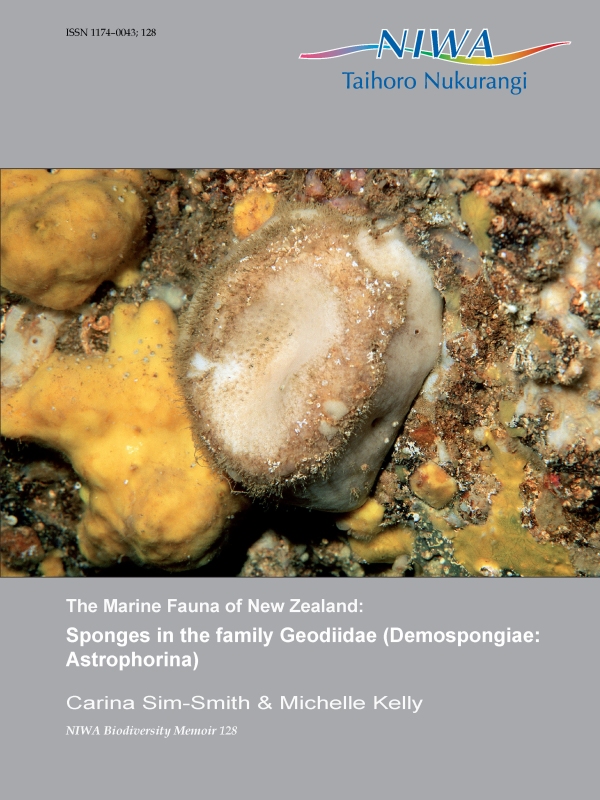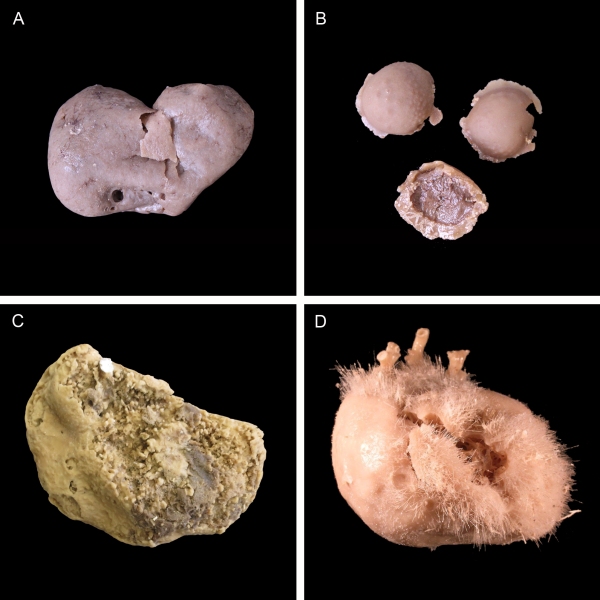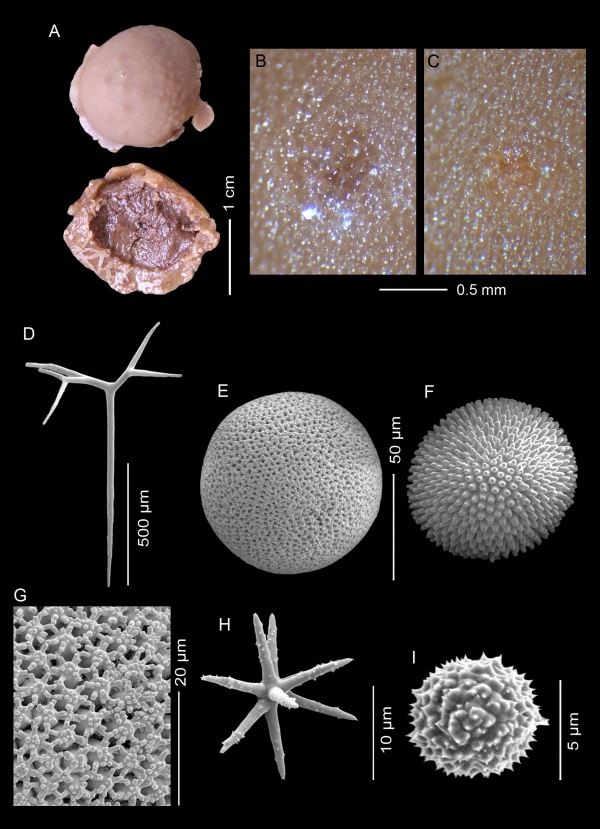Sponges are amongst the most common marine invertebrates that inhabit the New Zealand coastline, from the intertidal zone down to the continental shelf, to abyssal plains and deep ocean trenches. They are a very diverse group of animals and are often the first that you will encounter on the seashore or when out diving.
Many sponges form ‘biogenic habitats’ that support other animals, including commercially important fish species. These habitats can be vulnerable to damage by human activities (e.g., fishing and seabed mining), so knowledge of sponge biodiversity is critical for understanding the function of deep-sea and seamount ecosystems in order to improve their management.
Geodiidae sponges of New Zealand
Our latest 102 page NIWA Biodiversity Memoir focuses on a group of sponges known as the family Geodiidae. These sponges occur mainly in the deep sea, below depths of about 200 m; they typically have a hard, leathery, egg-shell like outer casing and often form a substrate for other sponges, animals and plants to grow on. Prior to this work, the Family Geodiidae was known in the New Zealand fauna by only four species, the majority of which were described way back in 1924! From an examination of over 300 sponge specimens in our NIWA Invertebrate Collection, this Memoir has added 14 new species to the genus Geodia, a new species of Erylus and new species of Caminus and Pachymatisma which represent new genus records in the New Zealand fauna. The total New Zealand Geodiidae fauna thus now stands at 22 living species.
NIWA Biodiversity Memoirs
The NIWA Biodiversity Memoir series of faunal monographs, originating in the 1950s, are technical works that aim to describe New Zealand’s marine life, mostly invertebrates like sponges, corals, worms, molluscs, crustaceans, sea stars and lesser-known groups. They are comprehensive, definitive, illustrated reference works that capture the rigorous, peer-reviewed scientific study of New Zealand’s distinctive marine fauna and flora. The Memoirs are beautifully presented stand-alone monographs that reveal the history and diversity of various animal and plant groups, with new species names and revisionary work that is relevant globally.
These important publications are indispensable references for academic researchers and postgraduate students interested in marine systematics and the conservation of New Zealand’s unique aquatic biodiversity, much of which is found nowhere else in the world, highlighting the uniqueness, strangeness, and diversity of much of New Zealand’s marine life. The information in these monographs is indispensable as it provides the foundation upon which marine biological and ecological research sits.
Most of the NIWA Biodiversity Memoir volumes are authored by our NIWA taxonomists funded by our Coasts and Oceans Research Programme 2 Marine Biological Resources: Discovery and definition of the marine biota of New Zealand, but many are authored by overseas specialists if expertise is lacking in New Zealand.





